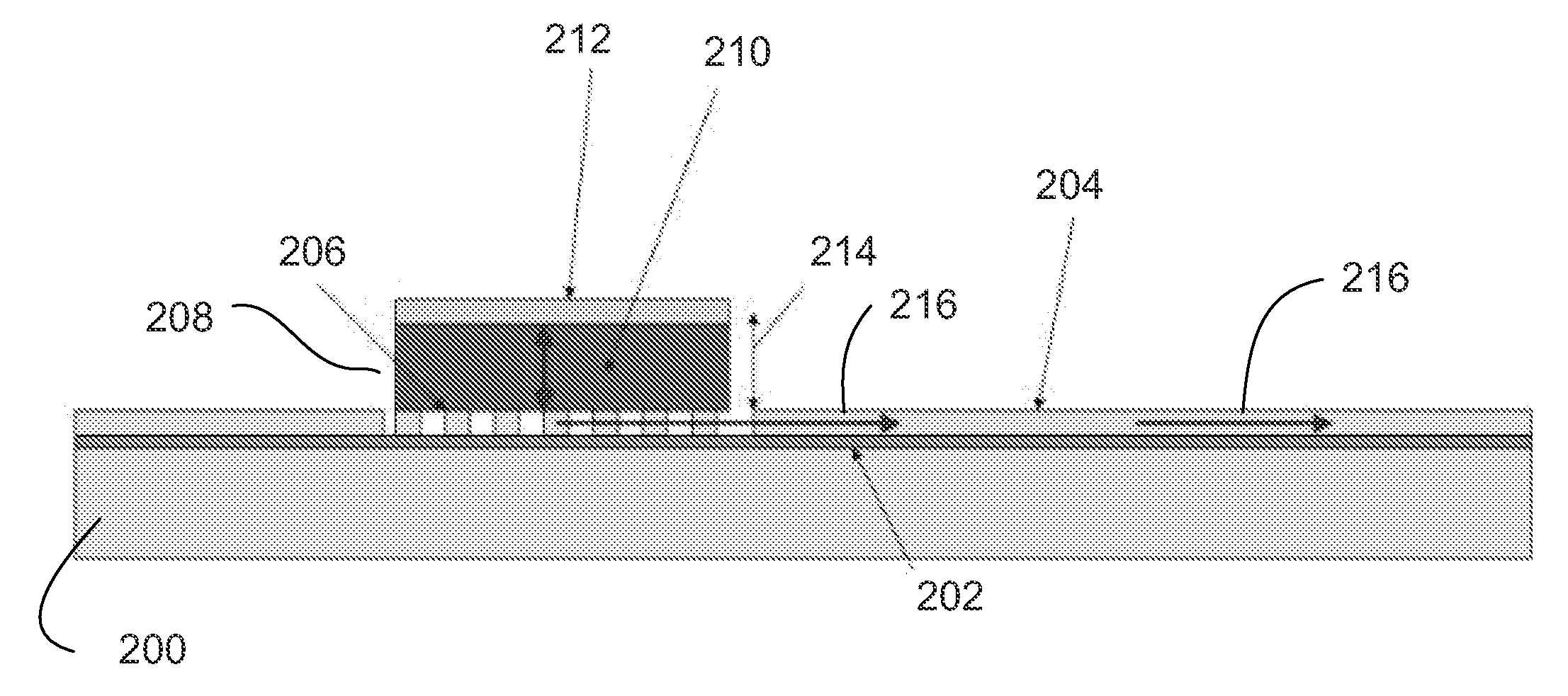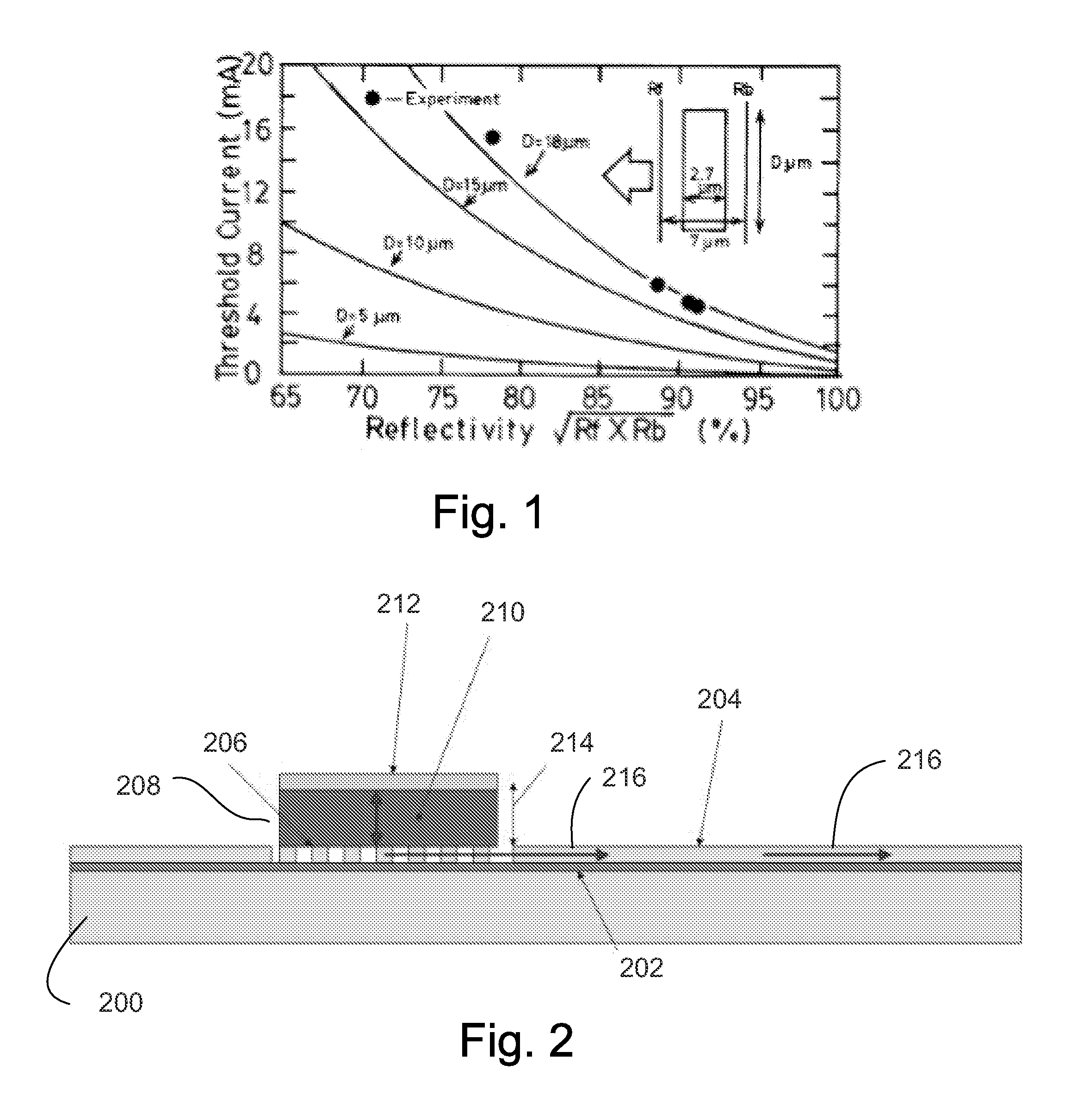Hybrid silicon vertical cavity laser with in-plane coupling
a laser structure and vertical cavity technology, applied in semiconductor lasers, instruments, optical elements, etc., can solve the problems of inefficient light emission of silicon, inability to efficiently generate large amounts of light, and heat generation of silicon
- Summary
- Abstract
- Description
- Claims
- Application Information
AI Technical Summary
Problems solved by technology
Method used
Image
Examples
Embodiment Construction
[0012]Described is a VCSEL-like laser on silicon. By combining the high efficiency and modulation bandwidth of vertical cavity lasers with the light guiding, multiplexing, detecting, and modulating capabilities of in-plane silicon photonics advantages may be obtained.
[0013]Reference throughout this specification to “one embodiment” or “an embodiment” means that a particular feature, structure, or characteristic described in connection with the embodiment is included in at least one embodiment of the present invention. Thus, the appearances of the phrases “in one embodiment” or “in an embodiment” in various places throughout this specification are not necessarily all referring to the same embodiment. Furthermore, the particular features, structures, or characteristics may be combined in any suitable manner in one or more embodiments.
[0014]Referring now to FIG. 2, embodiments of the invention involve wafer bonding an active III-V semiconductor material above a grating coupler made on ...
PUM
 Login to View More
Login to View More Abstract
Description
Claims
Application Information
 Login to View More
Login to View More - R&D
- Intellectual Property
- Life Sciences
- Materials
- Tech Scout
- Unparalleled Data Quality
- Higher Quality Content
- 60% Fewer Hallucinations
Browse by: Latest US Patents, China's latest patents, Technical Efficacy Thesaurus, Application Domain, Technology Topic, Popular Technical Reports.
© 2025 PatSnap. All rights reserved.Legal|Privacy policy|Modern Slavery Act Transparency Statement|Sitemap|About US| Contact US: help@patsnap.com



